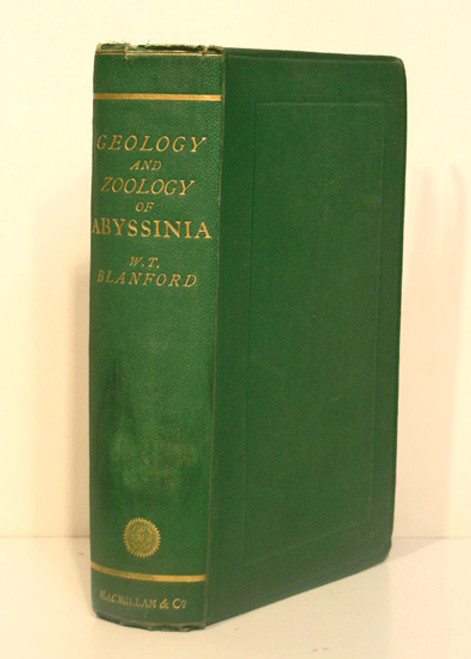Brande, William Thomas; Outlines of Geology; being the Substance of a Course of Lectures Delivered in the Theatre of the Royal Institution in the Year 1816. London, John Murray, 1817. Octavo, pp. viii, 144, folded hand colored profile.
The work is complete and in a 19th century half calf over marbled boards with gilt spine title with speckled text block edges. Presentation copy presented to the Charing Cross Hospital Medical College with penned presentation on end sheet and title page. The text and folded plate are exceptionally sharp and bright, free of library markings and stains. In very good condition.
William Thomas Brande, (1788-`866) was English chemist and geologist. He was to succeed Humphrey Davy as professor of chemistry at the Royal Institution in London in 1813 and is best known as the first person to isolate the element lithium in 1821. He was also primarily responsible for attracting Michael Faraday to the field of chemistry. His lectures on chemistry and geology at the Royal Institution were quite popular. Brande is best remembered in geology for his text book “Outlines of Geology”. The book grew out of a series of ten lectures he presented at the Royal Institution in 1816. A larger text was published in 1829. Within the ten lectures Brande discusses various theories regarding the succession of the Earth’s strata and the structure of specific types of sedimentary rocks, igneous rocks, minerals and metals, etc. Brande’s work was later overshadowed by Charles Lyell’s “Principles of Geology” which began publication in 1830 and thus is overlooked by historians of geology. However the publication of Lyell’s work did not prevent Brande’s earlier work from being well received. Brande’s work was far easier work to understand and read. Brande’s work also had an impressive hand-colored frontispiece which presents two geological sections, one from London to Cornwall, and the other from London to Cumberland. Hand-colored geological sections like these were not common in textbooks in 1817. William Smith had yet to publish his geological sections, which were printed in 1819. Thus Brande’s sections are amongst the first to appear within a textbook.












